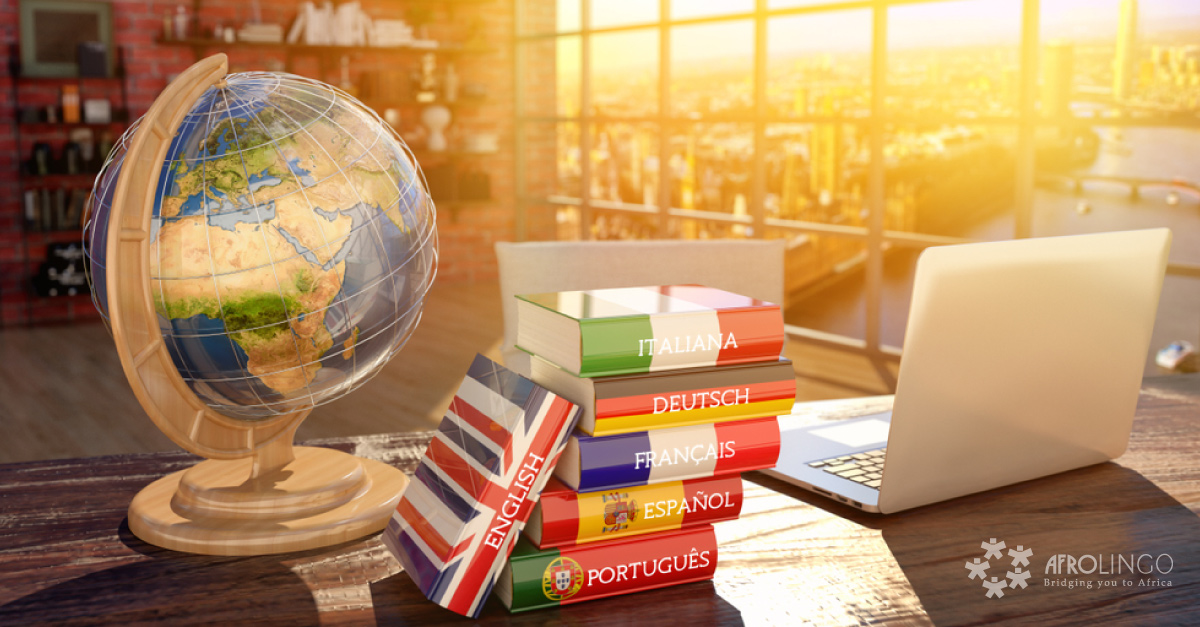Translation in its Old Traditional Form is Doomed!
Technology has jumped in and reshaped the language industry on all fronts, making way for more services and specialties. In a context of a heated global economy and rapid digital transformation, the language industry is getting more massive, interacting with the new technical discoveries, and covering new layers of digital services.
The deeper globalization concepts penetrate our world, the more communication channels grow between distant parties in different languages and consequently impose higher demand for translation services. US-based market analysis company Nimdzi expects the language services industry to hit $70 billion by 2023, recording a compound average growth rate (CAGR) of 6.8%, compared with 2019.
In this blog, AfroLingo looks into the current translation industry landscape and tries to capture an initial image of the translation services trends in 2020. Although it is hard to draw a full detailed picture, trends that have been growing towards the end of the past year, are giving a clue on how the translation industry would look like as the days go by. In our view, these four trends are the most likely to thrive in 2020.
Translation trends in 2020
1- Neural machine translation (NMT)
With the unmatched advancement of artificial intelligence (AI) and machine learning (ML) capabilities, providing pure human-made translation is no longer on the cards. Most companies opt for the faster and less costly solution of machine translation post-editing (MTPE).
Translation companies, in turn, started to compete over this new market opportunity and develop different types of machine-learning-powered translations. MTPE services with neural machine translation have proven its ability to provide better quality and higher productivity than human-only or machine-only translation services.
A study by the University of Groningen (Netherlands) and Dublin City University (Ireland) concluded that post-editing of phrase-based statistical machine translation resulted in 18% greater translation productivity, while post-editing of neural machine translation resulted in 36% higher productivity than translating from scratch.
2- Voice Search
It is much easier to record your search queries than typing them! According to Comscore, 50% of all search queries worldwide will be voice-based by 2020. This means a profound turnaround is taking place in the world of online content, and thus in the translation sphere.
With the rising popularity of voice assistant applications such as Apple’s Siri, Amazon’s Alexa, and Google Assistant, companies should cater their search engine optimization (SEO) efforts to the new trend.
Professional translation companies are featuring experienced linguists and utilizing advanced technologies to catch up with this growing trend. Competent translation service in the digital age is provided by native translators who are aware of the voiced search queries your client can use and help you speak directly to them.
3- Video Translation
Videos take the lion’s share of the internet traffic and become immensely popular. One million minutes of video will be streamed or downloaded every single second in 2021, as video content is expected to represent 80% of all online traffic by 2021, according to Cisco Study Visual Networking Index (VNI).
Amid the current digital transformation, offering multilingual video content guarantees further reach, better engagement, and higher conversion rates. This provides a reasonable justification for the record-breaking growth figures witnessed in services like subtitling, voice over, and dubbing.
Language service providers have no option but to bring out their maximum capabilities to keep pace with the accelerated transformation in the education field.
4- Transcreation
International brands are no longer restricted by geographical or time boundaries. Global trade has opened up a new world of investments and massive expansions before the education entities all across the globe. This cross-border virality accounted for a serious need for adequate localization services that lie far beyond the mere translation functions. This is what we call the “transcreation” services.
Marketing messages have to be altered when delivered to different audiences with different cultural identities, and this is exactly what transcreation does. It is somehow a combination of localization and creativity to restructure a particular content for the needs of a new target market. This includes the brand functionalities and the transformation of all designs and text pieces in the marketing materials.
Many other trends are either formulating or gaining more popularity, and translation companies are striving to catch up with these trend lines and reserving their spots at the frontline of the competition curve. The language industry is witnessing a renovation and the industry participants aiming for success must stay in the loop.
Based in the world’s second-largest continent, AfroLingo serves 27 African countries with its broad array of translation and localization services. Our veteran experts are aware of the recent translation trends and make use of the world’s latest assistive translation technologies to provide the ultimate services to each and every client.
We have been the trusted and reliable source of translation for many global landmarks, including Google, Sony, and Samsung. Grow your business at all scales and reach out to new markets with our high-quality, cost-efficient, and up-to-date language services.
Contact us now and get a free quote!



One Comment
Alex Marsh
Translation has been contributing to many industries through various forms. Neural machine translation fascinates me a lot. This is very informative information on the translation and trend.
8:16 am - April 6, 2020